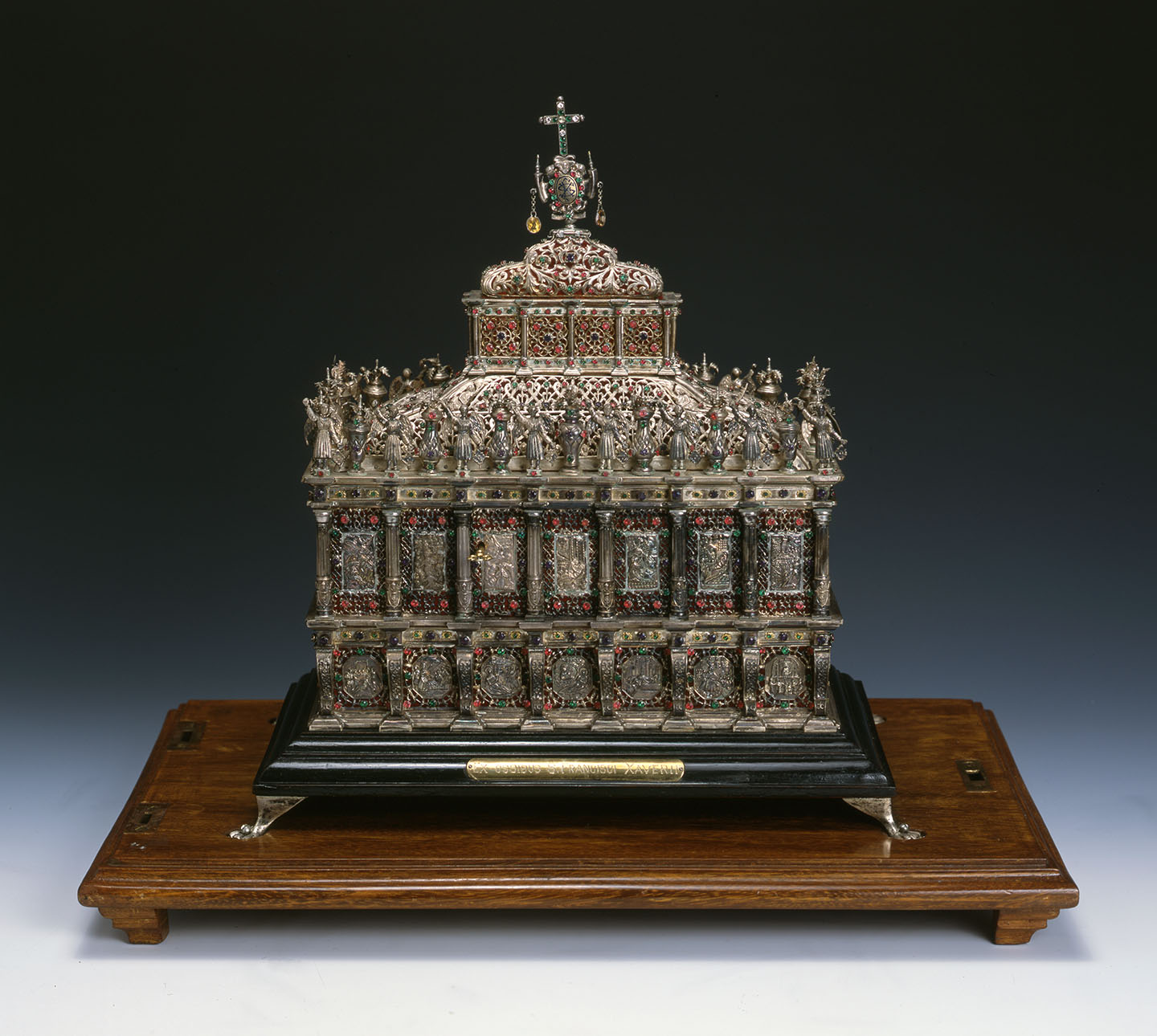St. Francis Xavier (1506-1552) was one of the seven co-founders of the Jesuit order in the Catholic Church. In 1540, after Pope Paul III (1468-1549) formally approved the Society of Jesus, Xavier was asked by King John III (1502-1557) of Portugal to travel to the East and spread the faith. Thereafter, Catholicism took root in India, the Moluka Islands in Indonesia, and as far away as Japan. In 1552, however, Xavier died of illness on Shangchuan Island off the coast of Guangdong before having the chance to set foot on the Chinese mainland to commence missionary work.
In the thirty years following Xavier's death, the Chinese coast and waters suffered from incursions by Japanese and local pirates, so the Ming dynasty government implemented a ban on private maritime activity, making it impossible for Catholic priests to enter China and preach. In 1573, Alessandro Valignano (1539-1606) as Visitor of Missions in the East was opposed to the idea of directly preaching. Instead, he advocated European missionaries prepare by learning native languages and becoming familiar with local customs and manners. Nine years later, in December of 1582, the missionaries Michele Ruggieri (1543-1607) and Matteo Ricci (1552-1610) were finally able to successfully land at Zhaoqing in Guangdong and "Xianhua Temple" was established. Over the years, Ricci was stationed in such places as Shaozhou, Nanchang, Nanjing, and Beijing, where he passed away. During his stay in China, he associated with Chinese literati and adopted a policy of spreading Catholicism via the study of Western learning. He worked with the scholar-official Xu Guangqi (1562-1633) and others in translating books on Western knowledge into Chinese, introducing such topics popular in Europe at the time as natural philosophy, music, calendrical studies, and mathematics. Ricci and the missionaries who came after him not only increased the religious influence of Catholicism in China but also actively expanded mutual exchange in knowledge between East and West.
Reliquary and relic of St. Francis Xavier (1506-1552)
- Made by Vamona Modcoicar
- 1843-1900, Goa, India
- Silver, enamel, wood, natural gems, glass
- Length: 47 cm, width: 40 cm, height: 30 cm
- Collection of the Office for the Liturgical Celebrations of the Supreme Pontiff
The realization of this reliquary is dated between 1843 and the end of the nineteenth century through the work of Vamona Modcoicar, goldsmith and jeweler in the city of Panaji (formerly Nova Goa), capital of the state of Goa and located on the southwestern coast of India.
It reproduces, on a small scale, the great funerary casket containing the remains of St. Francis Xavier (1506-1552), a Jesuit priest and apostle of India and Japan, the patron saint of missionaries. He was beatified by Pope Paul V (r. 1605-1621) on October 25, 1619, and canonized by Pope Gregory XV (r. 1621-1623) on March 12, 1622, along with the founder of the Jesuits, St. Ignatius of Loyola.
The construction of the large silver urn containing the body of the saint was an initiative of Brother Marcello Mastrilli, SJ. It was completed in 1637 as a result of the valiant efforts of local and European artists. The leading figure in this work was that of the Flemish Valerian Regnaert.
The tomb of St. Francis Xavier is located in Old Goa at the Basilica of Good Jesus ("Bom Jesus" in Portuguese) and, more precisely, inside the mausoleum commissioned by the Grand Duke of Tuscany, Cosimo III de' Medici (1642-1723), to the Florentine sculptor Giovanni Battista Foggini (1652-1725); work was finished in 1698 after a decade.
The reliquary is made of silver metal, silver, natural and fake gemstones, and enamel; all this is on a red velvet background. Inside, in a small glass case locked by a small door, there is a relic "ex ossibus" of St. Francis Xavier. The façades of the urn are divided into two galleries: the lower one is supported by architectural parapets, while the top of the columns has Doric capitals. Among these elements are small tiles surrounded by red, green and purple glass paste, and pierced silver, which show some scenes in relief from the life of the Saint. Above the four sides, the edge has small statuettes of angels alternating with vases. The top of the reliquary is tapered and completely covered with floral and curled piercing technique; it is also adorned with small colored pieces of glass paste. At the center is a molding that ends at the top with a Latin cross decorated with colorless natural gems (probably corundum) and green glass paste; two citrines hang on the sides of the shield, under the cross, bearing the engraved initials of the saint.
The urn rests on dark wood with four legs of silver in the corners, placed on a larger wooden base. On the first base are two engraved plaques mentioning the saint and the artist responsible for the reliquary.
Inscriptions on the wooden base:
Ex ossibus S. Francisci Xaverii
Joalharia Indo Portuguesa Vamona G. Modcoicar Nova-Goa




